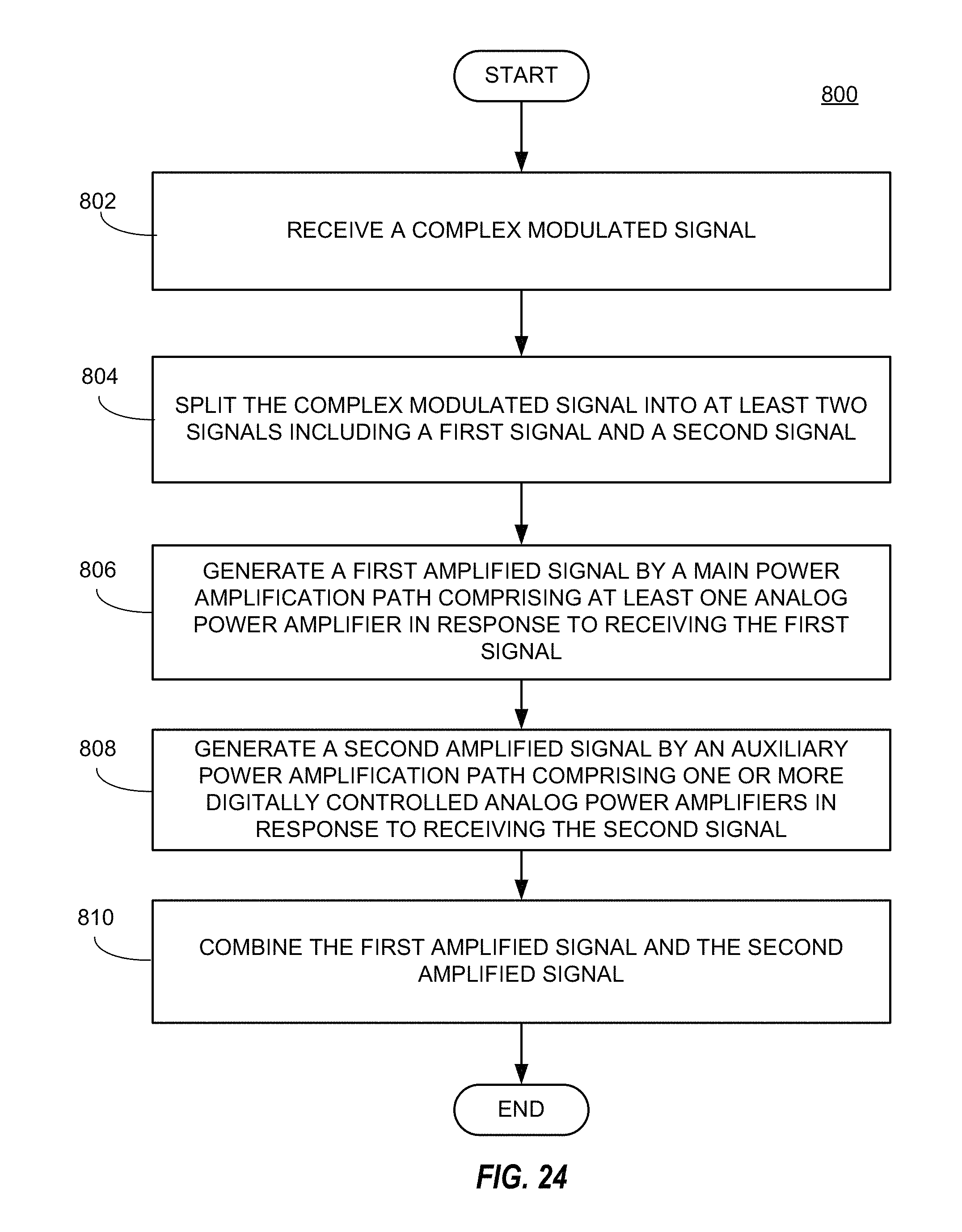Georgia Tech inventors have developed a broadband mm-wave mixed signal Doherty TX, with linearity and energy efficiency to support multiple bands for 5G MIMO systems. The Doherty output network with offset lines extends the Doherty power amplifier carrier frequency range and reduce the passive loss at deep PBO. Built-in 360° mm-wave phase-rotators reconfigures static main/auxiliary phase-offset for further frequency extension. The Doherty power amplifier (PA) employs mixed-signal power cells. While the main PA contains an analog PA and digital binary PA cells, the auxiliary PA contains digital binary PA cells. As a result, there is an optimum TX efficiency. Driven by complex modulated signals, the PA signal bandwidth is largely reduced to ease GHz modulation. The multi-path Doherty PA reconfiguration leads to enhancing TX efficiency up-to 12 dB PBO.The system also uses a computation-assisted dynamic AM-PM feedforward cancellation by mm-wave phase rotators to support GHz modulation. Lastly, the mixed-signal Doherty PA also compensates in-field performance variations, including antenna VSWR.
- Higher efficiency in the power back-off
- Higher linearity in the power back-off
- Higher modulation speed up-to Giga-symbols
- First ever 1:1.6 operation frequency span in silicon, allowing for covering two 5G mm-wave bands at 28 GHz and 38 GHz
- Applications of 5G mm-wave communication and mm-wave radar
A major challenge for 5G mm-Wave wireless link is the broadband, linear, and energy-efficient transmitter (TX) system. To support dynamic access, it is desirable for the TX to cover two or more 5G mm-Wave bands with minimum output-power. The TX energy-efficiency is critical to governing the system power consumption and required thermal management. Linearity is also critical to support high-PAPR modulations, which is particularly important for concurrent multi-beam forming in MIMO systems. Among advanced TX architectures, it is difficult to meet GHz modulation bandwidth with envelope-tracking TXs, while out phasing TXs can be overly frequency-dependent.

